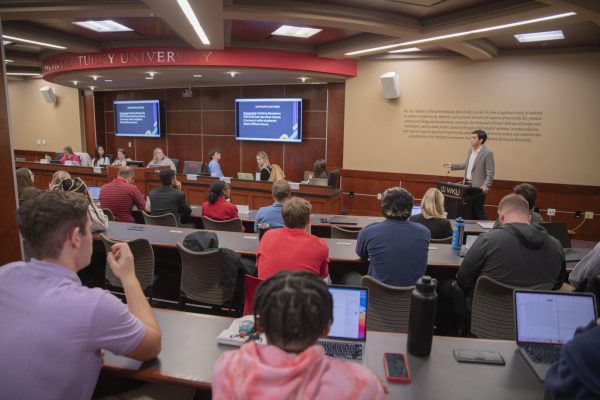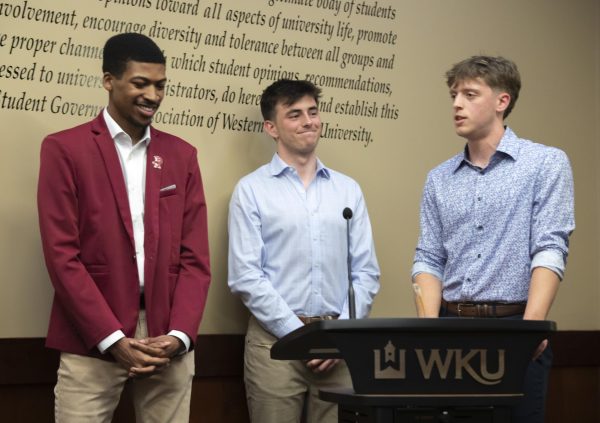SKyTeach benefits in former Honors College building
September 7, 2016
Since their move to the former Honors College building this past winter, the employees of Southern Kentucky Teach, a program designed to train students who want to become middle or high school math or science teachers, have been enjoying their new home.
Lester Pesterfield, SKyTeach science co-director, said before the transition to the now called the SKyTeach Building, the program was located in the Thompson Complex Central Wing in the former dean’s office. Pesterfield said some of the offices, however, were located in other places throughout the building preventing all of the faculty from being close together.
“When the Honors College moved out of the building, it was just an opportunity for us to be in a building together,” Pesterfield said.
Martha Day, SKyTeach education co-director and SKyTeach executive director, said the ability to have one building for all of the faculty facilitates more communication. She said it also allows the SKyTeach program to have its own identity on campus.
“Originally I was a little skeptical about it, but I really love it,” Day said. “It’s a great location on campus, and it’s a comfortable setting.”
In addition to providing office space for the faculty, Pesterfield said the building also contains a conference room and consultation rooms where students are able to meet with faculty for extra help outside of the classroom.
David Almand, a SKyTeach master teacher, said the only faculty member who does not have an office located in the new building is Karen Long, the SKyTeach coordinator. He added although the building allows most of the faculty to be together, it may be harder for students to find the new location.
“It can be difficult for students to find us because we’re physically separated in a building that may or may not be easily accessible to students,” Almand said. “It’s harder for students to casually run into us.”
The SKyTeach program is a program dedicated solely to preparing middle school and high school math teachers to enter the work force when they graduate. All WKU students who are interested in pursuing a degree in math or science and becoming a middle or high school teacher must go through the program.
Pesterfield said when students complete the four year program they graduate with a double major; one major will be in their chosen area of study in math or science. The other major will be in science and mathematics education. In addition to graduating with two majors, Pesterfield said students will also leave WKU with real classroom experience.
“One of the things that the SKyTeach program does is we take students from their very first semester in the program and we take them out and they do teach in the local schools,” Lesterfield said. “They have real world experience in the middle and high school classrooms and that’s what people need.”
Day said in addition to providing a double major, SKyTeach is also unique because students are taught by a team of teachers consisting of one professor and one master teacher. Day said master teachers, people who previously taught in middle or high school classrooms, help students learn how to take the content they learn in the classroom and transfer it to a classroom environment.
“The master teacher serves as a coach or a bridge to help our students marry the content knowledge learned in class and the professional practice of a teacher,” Day said. “So they actually help them relay that knowledge in a clinical setting to kids in the classroom.”
Day said SKyTeach is part of a group of 43 universities that engage in a program called UTeach, which was developed at University of Texas at Austin.
According to the website for the University of Texas at Austin, UTeach is “the original UTeach STEM teacher preparation program, a national expansion effort for that program and a number of local STEM education initiatives, all supporting the improvement of STEM education and the public education system overall.”
Part of this program is a focus on inquiry learning, which encourages students to build their own base of knowledge. Instead of using lectures to teach, students are taught to use their own knowledge to solve problems, Day said.
“We wouldn’t say, okay here’s a quadratic equation, solve it or here you have to balance a chemical equation, balance it,” Day said. “We would actually pose the problem to the student and allow them to construct the knowledge.”
Reporter Emma Collins can be reached at 270-745-6011 and [email protected]. Follow her on Twitter at @thebest_dilemma.










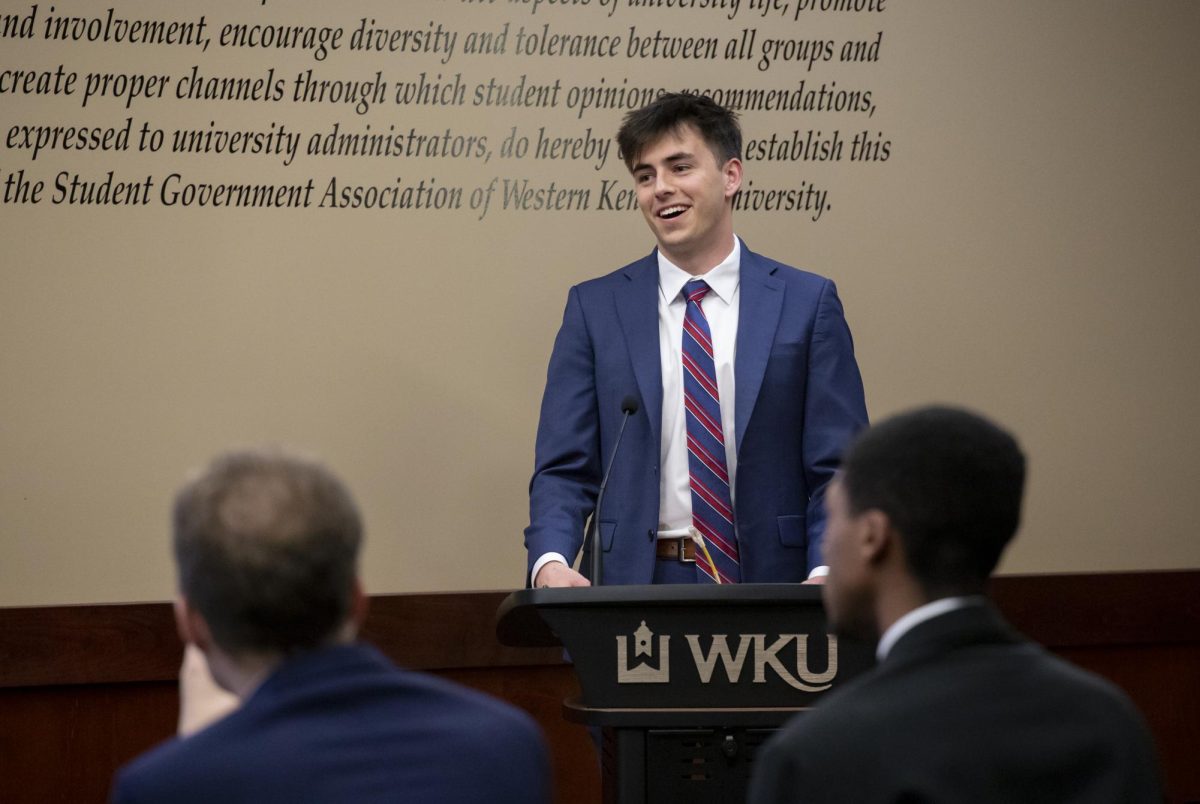
![Students cheer for Senator at Large Jaden Marshall after being announced as the Intercultural Student Engagement Center Senator for the 24th Senate on Wednesday, April 17 in the Senate Chamber in DSU. Ive done everything in my power, Ive said it 100 times, to be for the students, Marshall said. So, not only to win, but to hear that reaction for me by the other students is just something that shows people actually care about me [and] really support me.](https://wkuherald.com/wp-content/uploads/2024/04/jadenmarshall-1200x844.jpg)
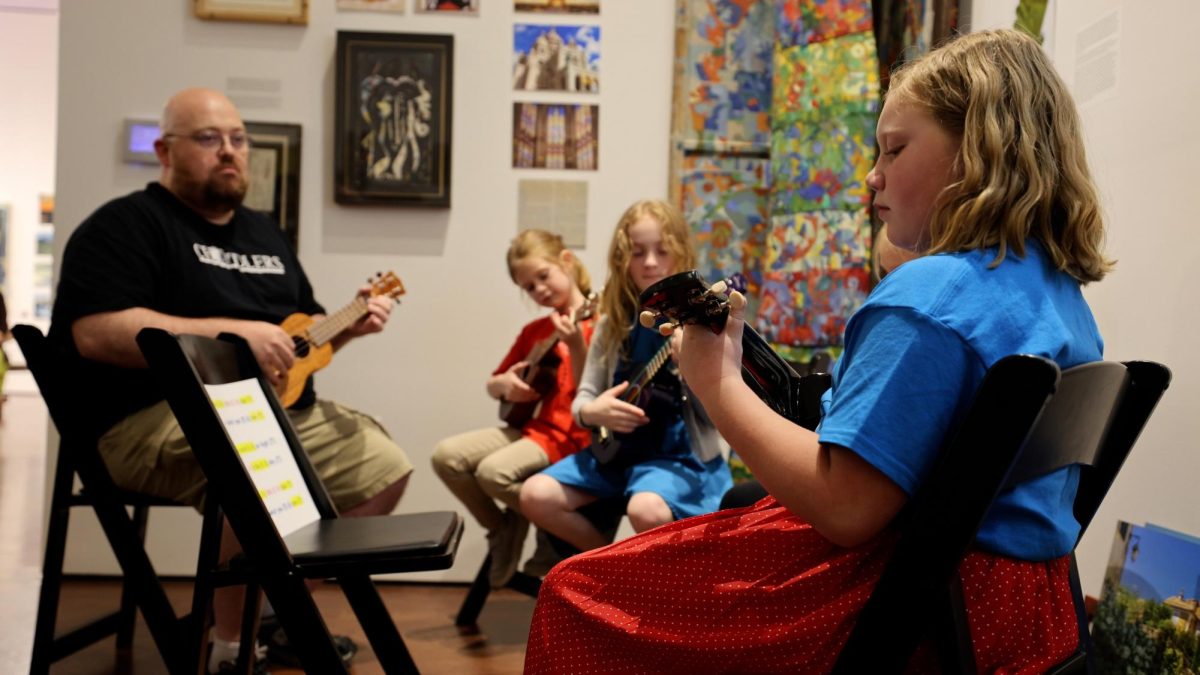
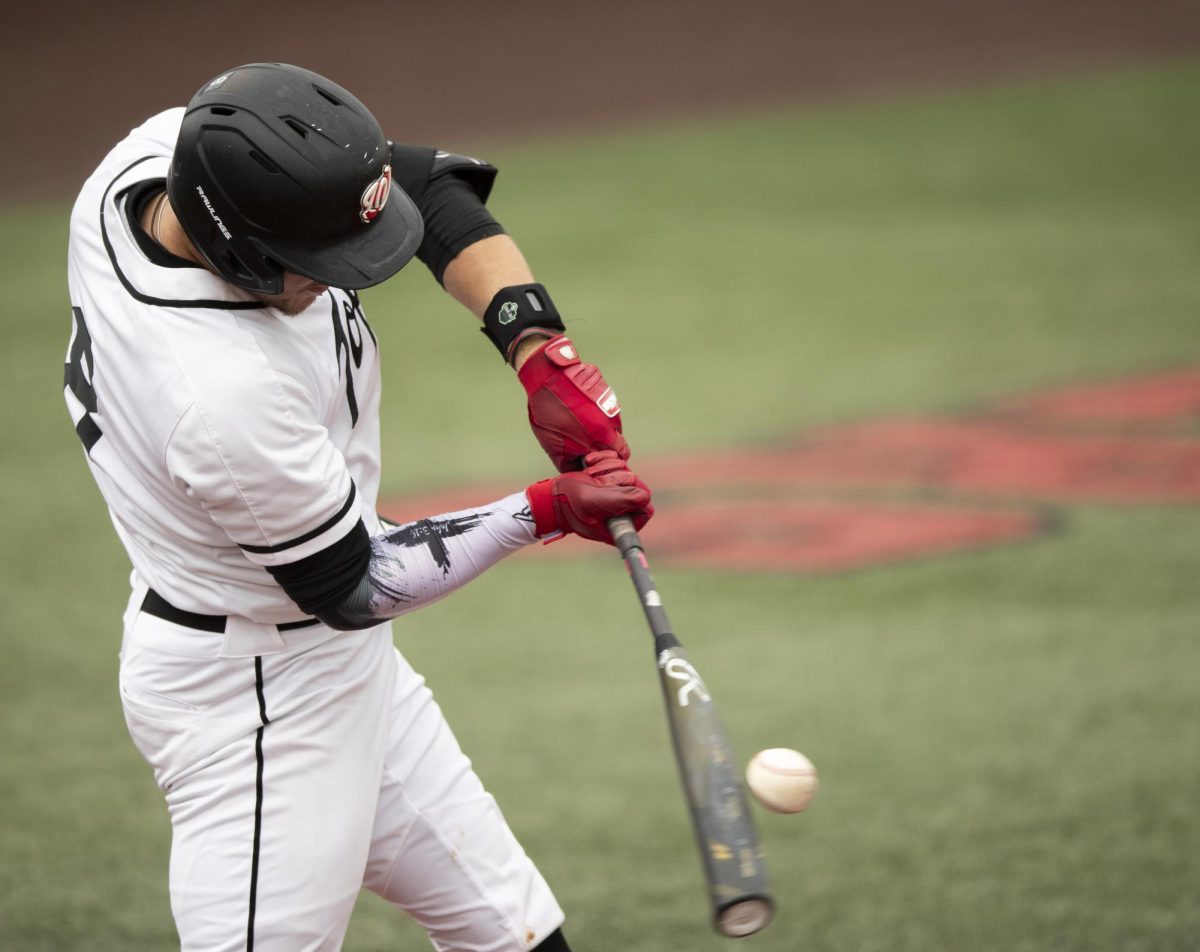

![Students cheer for Senator at Large Jaden Marshall after being announced as the Intercultural Student Engagement Center Senator for the 24th Senate on Wednesday, April 17 in the Senate Chamber in DSU. Ive done everything in my power, Ive said it 100 times, to be for the students, Marshall said. So, not only to win, but to hear that reaction for me by the other students is just something that shows people actually care about me [and] really support me.](https://wkuherald.com/wp-content/uploads/2024/04/jadenmarshall-600x422.jpg)





